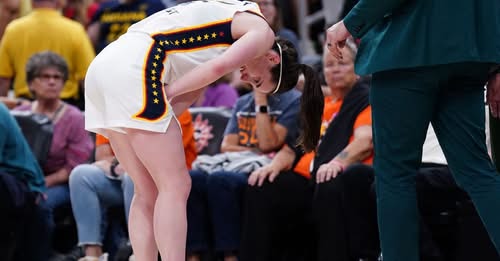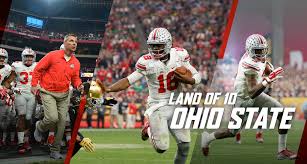The momentum of a breakout sophomore season can be electrifying, and that’s exactly what Caitlin Clark has been experiencing. In just her second year with the Indiana Fever, she’s not only cemented her status as a generational talent, but also as the very embodiment of the so‑called “Caitlin Clark Effect”—a force reshaping the WNBA’s popularity and reach (TalkSport). Crowds flock to arenas, television ratings surge, and merchandise flies off shelves. Her court vision, deep‑range shooting, and infectious passion have invigorated the league in ways not seen before. Yet, even amid the highlights and heroics, a sobering reality has emerged: elite performance at this level exacts a physical toll that can’t be overlooked.
On Tuesday, July 15, 2025, at Boston’s iconic TD Garden, the Fever faced off against the Connecticut Sun. The atmosphere was charged—not just because of the teams, but because the arena, technically serving as the Sun’s “home,” was largely filled with courageous Fever fans showing up for Clark (CT Insider). From tip‑off, it was clear the game would be a physical battle. Clark, often the target of tight, aggressive defense, was met with more intensity than ever. Tempers flared: she engaged in a heated exchange with veteran referee Michael Price—an episode broadcast widely enough to spike social chatter (TalkSport).
Her stats reflected the challenge: 14 points, eight rebounds, seven assists—a stat line that reflected both her skill and the difficulties she faced, including shooting struggles, making just 4‑of‑14 from the field (28.6%) (New York Post). But the biggest story unfolded in the final minute. After sliding a bounce pass to teammate Kelsey Mitchell, Clark abruptly clutched her right groin, grimacing. She slowly made her way downcourt, head bowed, emotion flashing across her face. At one point she banged her forehead into the stanchion, covered her head with a towel in what appeared to be a fight to hold back tears—and then retreated to the bench (TalkSport).
The immediate diagnosis? A re‑aggravation of her recent groin injury. Coach Stephanie White was candid: “She just felt a little something in her groin. We’ll get it evaluated and see what happens from there” (TalkSport). In postgame remarks, White underscored the heightened physicality of the league and mentioned that they would help Clark “learn to adjust and use it” (Fox News).
That response belies a darker truth: this was yet another unwanted milestone. It marks her third significant physical setback this summer—a left quad strain in May, a left groin strain in late June, and now this right‑side groin issue. She’s already missed ten games this season—unprecedented for a player who, until this year, had never missed a single game in her high school or stellar collegiate career at Iowa (The Sun).
To break it down:
- May: sustained a quadriceps strain, sidelining her for five games .
- Late June: returned only to suffer a left groin strain, again missing five games (Fox News).
- July 15: re‑aggravated the groin during the heated matchup in Boston (TalkSport).
What makes groin injuries so tricky—and why they often repeat
The groin area is a biomechanical web of muscles—adductors, hip flexors, internal rotators. It’s involved in nearly every basketball move: cutting, lateral slides, jumps, pivots, drives to the rim. When one of these muscles strains, the injury is rarely isolated. Healing is slow; movement limitations can disturb balance elsewhere, setting a domino effect.
What’s often underestimated is how reinjuries occur. An athlete returning too soon—even with 90% strength—may still have neuromuscular deficits. That 10% gap means less shock absorption or changed mechanics, increasing stress on surrounding tissues. Clark’s quick turnaround after her last groin strain exemplifies that risk.
Add in the unrelenting physicality of the WNBA—and the way defenses game-plan to slow her down—and it’s no surprise her body has taken repeated hits . The league’s evolution into a faster, more contact-driven style is a double‑edged sword: thrilling for fans, but taxing for high-usage stars like her.
It’s important to note that while athletes today benefit from advanced rehab protocols—MRI diagnostics, strength and conditioning, biomechanics assessment—there’s still no perfect bulletproofing. Rehab is as much about retraining movement patterns and rebuilding confidence through gradual load increase as it is about healing tissue (SI).
Short-term ripple effects for Fever, All-Star weekend, and the Liberty game
Blessed with a 12‑10 record going into Boston, the Fever were riding momentum (TalkSport). But Clark’s latest injury cast a shadow over what should have been a celebratory build-up to the All-Star break. She’s not only scheduled to be a captain in Saturday’s All-Star Game in Indianapolis, but also to compete in Friday’s three-point contest—an event that has already drawn historic viewership due to her appeal (SI).
In Boston, the Pride-filled crowd—largely Fever rooting sections—could hardly hide their concern. As Clark departed, cheering abruptly shifted to hushed silence. Immediately, job one for the Fever medical staff was imaging: they needed clarity, and quickly .
The clock was ticking. The Fever had a back‑to‑back—the second night scheduled at Brooklyn’s Barclays Center against the Liberty. Reports confirmed Clark was ruled out for Game 1 of the New York series as of tip-off Wednesday, with her All‑Star participation still in limbo (ESPN.com). Coach White stressed that there were no decisions made yet about the All‑Star events and insisted that long‑term health outweighed the allure of weekend fanfare (Fox News).
In practical terms, losing her presence—whether just for the Liberty game or all of All‑Star weekend—is a heavy dent. The Fever’s net rating with Clark on the floor is nearly six points better per 100 possessions (The Next). That edge could shift game outcomes, roster decisions, or playoff positioning. But this season has also sharpened Indiana’s depth. Players like Kelsey Mitchell, Aliyah Boston, and Sydney Colson have picked up the slack during Clark’s previous absences. That said, nothing replaces the ability to stretch defenses or lead transitions like Clark does.
The mental aspect: talent trapped by frustration
Perhaps most telling were the emotions on the court. Her frustration peaked in Boston—not only from the injury, but from feeling targeted. She exchanged words with refs, mimicked a phone call in visible disgust, and stormed at the stanchion after the play (The Next). That emotional storm tells us that this isn’t just a recurring physical issue; it’s a stress on her mental state. Athletes who rely on timing, rhythm, and confidence—qualities she’s built her legend on—are especially vulnerable when movement feels compromised.
Postgame, her brother Colin also weighed in, blaming officiating for contributing to the injury (TalkSport). While it’s natural to take stock of officiating, it’s critical, especially now, for Clark to channel inner focus—not outward channels of blame.
Clark has consistently framed this season as a process—“one step at a time,” as White echoed. But routine injuries, repeated setbacks, and the blurred boundaries between passion and physical pain can erode mental resilience quickly. The challenge now is rebuilding trust in her body and letting go of frustration long enough to heal fully.
Lessons for athletes, coaches, and the sports world
This incident serves as a case study in several key domains:
1. Load management and rest
High-usage players, especially in their second professional season, need acute attention to rest periods and usage rates. Even with elite conditioning, degradation occurs over time—fatigue begets injury.
2. Progressively-paced rehab
Clark’s return after her June groin strain—which saw her play four games in rapid succession—may have lacked critical recovery time. A gradual ramp-up, even at the cost of short-term performance, can avert recurring injury and preserve long-term availability.
3. Rolled-out physical adaptation
Given how defenses challenge her physically, incorporating targeted strength training for hips, adductors, glutes, and core—enhanced with neuromuscular drills—can help her body better absorb impact and reduce risk.
4. Mental resilience strategies
Injury isn’t only physical; frustration often delivers the heaviest blow. Psychological tools—mindfulness, visualization, acceptance—will be crucial for her eventual full return.
5. League-level pacing and scheduling
The WNBA’s condensed schedule and All-Star timing poses structural stress. Restorative pauses, clearer concussion protocols, overlapping rehab windows—all merit league-wide dialogue to protect its stars and competitive fairness.
What’s next for Clark and the Fever?
Medical update is still pending—imaging will determine whether this is a mild strain needing short rest, or something that requires more intensive therapy. Fever staff want clarity, though White downplayed immediate prognosis pending evaluation .
Shorter-term impact: she’s likely out for the Liberty matchup. All‑Star weekend participation is in serious jeopardy. Whatever happens in Indianapolis—whether she attends injured, sits out, or is held back—will influence her narrative this season.
Longer-term strategy: Clark and the Fever organization must resist the gravitational pull of storyline exposure if it compromises finals or playoff health. Coach White emphasized long-term readiness over immediate spectacle .
Team response: Indiana has already cultivated depth awareness. Kelsey Mitchell and Aliyah Boston have carried the torch, making the case for Clark’s presence to amplify—not define—the Fever identity.
A defining moment disguised as a setback
Clark’s journey thus far embodies the modern superstar arc: scientific prowess meets media frenzy meets physical strain. Each breakthrough—All‑Star captaincy, record fan votes, scoring prowess—comes with the corollary of heightened scrutiny, physical assault, and performance pressure. In this moment, the question isn’t whether she’ll come back—but how decisively she’ll return, what adjustments she’ll make, and how she turns this challenge into another building block for greatness.
A successful bounce-back isn’t guaranteed. But what makes Caitlin Clark remarkable is her consistency under fire—in college, where she became Division I’s all‑time scoring leader; in the WNBA, where she broke rookie records and shook viewership; and now in the crucible of injury and recovery.
This is the kind of crossroads that separates good players from legends. If she comes back stronger, better balanced, and more in tune with her body, it only cements her standing. And while fans may wince at the moment, this might be exactly the test she—and the Fever as an organization—needed to mature beyond short-term hype into sustainable excellence.
Reflections for the broader athlete community
Clark’s story is far from unique—but its visibility makes it a valuable lesson. Here’s how players, coaches, and league officials can draw on what’s happening:
- Players: Embrace rest as a tool—not weakness. Learn to recognize when “playing through pain” morphs into playing into long-term injury.
- Coaches: Strike balance between competitive drive and athlete stewardship. Be the voice that defends both the “now” and the “later.”
- Sports administrators: Explore calendar tweaks, rehab support, and investor incentives for load-conscious scheduling. The WNBA has momentum—let sustainability match its story.
What fans should know—and expect
If you’re a fan, expect some adjustments:
- Jersey sales won’t stop, but seeing Clark back on the court, full‑force, is the real reward.
- Less is more: Sometimes a missed All–Star appearance signals commitment to playoffs and championships. Fans may not love the short-term absence, but they’ll appreciate the foresight.
- Every comeback writes its own story: Watch for updates after imaging, rehab reports, and any comments from Clark or White about anticipated return timing.
Above all, this moment in Clark’s career isn’t an interruption—it’s a punctuation in her narrative. Setbacks don’t define her; how she responds does.
In summary: Caitlin Clark’s exit from Tuesday night’s game at TD Garden isn’t just another injury—it’s a sign of external forces closing in on her physical boundaries. As one of the league’s brightest trailblazers, the WNBA’s new face is being tested in real time. But with every challenge comes opportunity: for smarter recovery, refined skill, and a deeper mental toughness. The next chapter—which may unfold over days, weeks, or even months—will show whether her ascent continues, undeterred.
Her next steps are unknown—but one thing is certain: fans, teammates, and the league itself are watching. Not just for her shot-making, but for her shot at redefining resilience in women’s basketball.
- TalkSport
- People.com
- CT Insider



